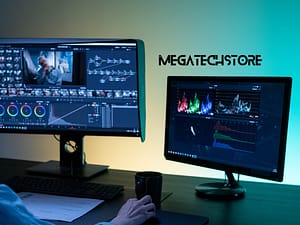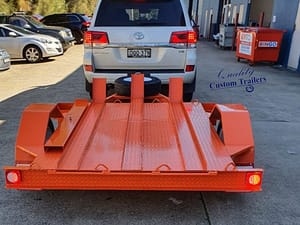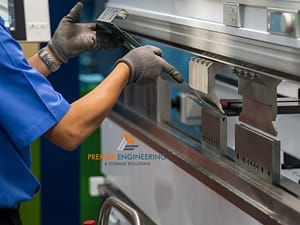Seasonal equipment rental is a cost-effective solution for businesses and individuals who require specific tools and machinery for temporary periods. Whether for construction projects, events, or agricultural needs, renting equipment allows for flexibility and access to the latest technology without the hefty upfront costs associated with purchasing.
Importance of Efficient Equipment Usage for Seasonal Projects
Efficient use of rented equipment is crucial for maximizing productivity and ensuring that projects stay on schedule and within budget. Proper planning and utilization of tools like scissor lifts and VMS boards can significantly enhance operational efficiency, reduce downtime, and improve overall project outcomes.
Common Seasonal Equipment Rentals
Scissor Lift Rentals for Seasonal Projects
Scissor lifts are versatile pieces of equipment commonly rented for various seasonal projects, such as:
- Construction and Maintenance: Ideal for tasks requiring elevated access, such as painting, window cleaning, and electrical work.
- Event Setup: Useful for setting up decorations, lighting, and audio-visual equipment at events.
- Agricultural Use: Helps in tasks like tree pruning and fruit picking, which require working at heights.
VMS Boards for Temporary Signage and Information
Variable Message Sign (VMS) boards are essential for providing real-time information and managing traffic during seasonal projects and events. They are commonly used for:
- Roadworks and Construction Sites: Directing traffic and informing drivers of road conditions and detours.
- Events and Festivals: Guiding attendees, displaying schedules, and providing important updates.
- Emergency Situations: Communicating safety information and evacuation routes.
Benefits of Renting Equipment for Seasonal Needs
Cost Savings Compared to Purchasing
Renting equipment for seasonal needs offers significant cost savings. Instead of investing large sums in purchasing equipment that may only be used for a few months, renting allows you to pay only for what you need when you need it. This frees up capital for other critical business operations.
Flexibility and Scalability for Varying Demand
Seasonal projects often come with fluctuating demands. Renting equipment provides the flexibility to scale up or down based on project requirements. Whether you need additional scissor lifts during peak construction periods or more VMS boards for a large event, rental services can accommodate these changes efficiently.
Planning for Seasonal Equipment Rental
Identifying Equipment Needs for Seasonal Projects
Proper planning begins with identifying the specific equipment required for your seasonal projects. Assess the scope of the project and list the necessary tools, such as scissor lifts for elevated tasks and VMS boards for communication and signage. Understanding your needs ensures that you rent the right equipment for the job.
Scheduling Rentals to Ensure Availability
To avoid delays, schedule your equipment rentals well in advance. Seasonal projects often coincide with high demand periods, so booking early guarantees that the necessary equipment will be available when you need it. Coordinate with rental companies to confirm delivery and pickup dates, ensuring a smooth workflow.
Tips for Efficiently Using Scissor Lifts
Safety Guidelines for Operating Scissor Lifts
Safety is paramount when operating scissor lifts. Here are some key guidelines to follow:
- Training and Certification: Ensure operators are properly trained and certified to use scissor lifts.
- Inspection: Conduct a thorough inspection of the lift before each use, checking for any signs of damage or malfunction.
- Stabilization: Always use the lift on stable, level ground and engage the brakes before elevating.
- Load Limits: Do not exceed the manufacturer’s load capacity and ensure the weight is evenly distributed.
- Safety Gear: Operators should wear appropriate safety gear, including helmets and harnesses.
Maximizing Productivity with Proper Usage
Efficient use of scissor lifts can significantly enhance productivity:
- Pre-Planning: Plan the tasks that require the lift to minimize unnecessary movement and repositioning.
- Tool Organization: Keep tools and materials organized on the platform to avoid wasting time searching for items.
- Team Communication: Maintain clear communication with ground personnel to ensure smooth and coordinated operations.
Maintenance Tips During the Rental Period
Proper maintenance during the rental period ensures the lift remains in optimal condition:
- Daily Checks: Perform daily checks on fluid levels, battery charge, and tire condition.
- Cleaning: Keep the lift clean to prevent debris from causing damage or operational issues.
- Reporting Issues: Immediately report any malfunctions or damage to the rental company to address issues promptly.
Effective Use of VMS Boards in Seasonal Projects
Setting Up and Programming VMS Boards
VMS boards are essential for communication and traffic management:
- Proper Placement: Position the boards where they are clearly visible to oncoming traffic or event attendees.
- Secure Installation: Ensure the boards are securely installed to withstand weather conditions and potential tampering.
- Programming: Program the boards with clear, concise messages. Use simple language and avoid abbreviations that might be confusing.
Using VMS Boards for Traffic Management and Public Information
VMS boards play a crucial role in managing traffic and providing information:
- Traffic Management: Use boards to direct traffic flow, indicate detours, and provide warnings about roadwork or closures.
- Event Information: Display event schedules, directional guidance, and safety information for attendees.
- Emergency Alerts: Quickly update messages to convey emergency alerts and instructions during unforeseen events.
Ensuring Visibility and Readability
For VMS boards to be effective, they must be visible and readable:
- Optimal Height and Angle: Position the boards at a height and angle that maximizes visibility from a distance.
- Lighting: Ensure the boards have adequate lighting, especially for nighttime visibility.
- Contrast and Font Size: Use high-contrast colors and large font sizes to ensure messages are easily readable.
Managing Costs and Budget for Seasonal Rentals
Budgeting for Seasonal Equipment Rental
Effective budgeting ensures cost control:
- Estimate Needs: Assess the equipment required and estimate the rental period to create an accurate budget.
- Include All Costs: Account for delivery, setup, maintenance, and potential overtime charges in the budget.
- Contingency Fund: Set aside a contingency fund to cover unexpected expenses or extensions.
Comparing Rental Rates and Finding the Best Deals
Finding the best rental deals can save money:
- Multiple Quotes: Request quotes from several rental companies to compare rates and services.
- Discounts and Promotions: Look for seasonal discounts, promotions, or loyalty programs offered by rental companies.
- Long-Term Rentals: Negotiate better rates for long-term rentals or bulk equipment needs.
Understanding Rental Agreement Terms and Avoiding Extra Fees
Thoroughly understanding rental agreements can prevent additional costs:
- Read Terms Carefully: Carefully read the terms and conditions of the rental agreement, focusing on liability, maintenance, and return policies.
- Clarify Fees: Clarify any potential extra fees, such as late return charges or damage penalties, before signing the agreement.
- Adhere to Guidelines: Follow the rental company’s guidelines for equipment usage, maintenance, and return to avoid unnecessary fees.
Environmental Benefits of Seasonal Equipment Rental
Reducing Environmental Impact with Temporary Rentals
Renting equipment can significantly reduce environmental impact:
- Resource Efficiency: Renting allows multiple users to share the same equipment, reducing the demand for new manufacturing.
- Lower Emissions: Newer rental equipment is often more energy-efficient and produces fewer emissions compared to older, owned machinery.
- Minimal Waste: Renting reduces waste associated with equipment disposal at the end of its lifecycle.
Promoting Sustainable Practices in Equipment Usage
Sustainable practices can be integrated into equipment rental:
- Energy-Efficient Models: Choose energy-efficient equipment models that consume less power and produce fewer emissions.
- Sustainable Operations: Implement sustainable operation practices, such as reducing idle time and using eco-friendly fuels.
Minimizing Waste and Overproduction
Renting equipment helps minimize waste and overproduction:
- Reusability: Rental equipment is reused by multiple customers, extending its useful life and reducing the need for new equipment production.
- Reduced Storage Needs: Renting eliminates the need for long-term storage, reducing the space and resources required to maintain equipment.








